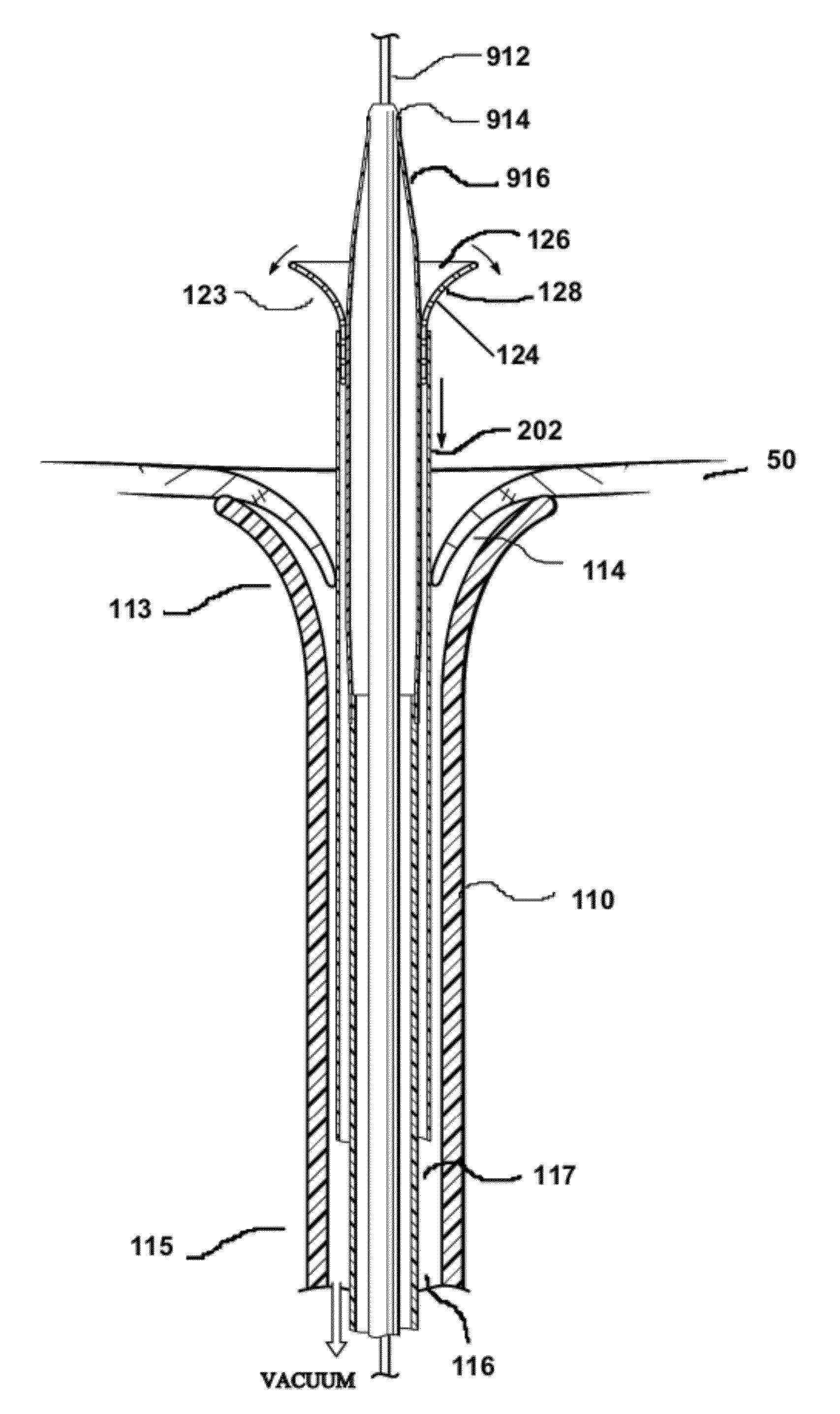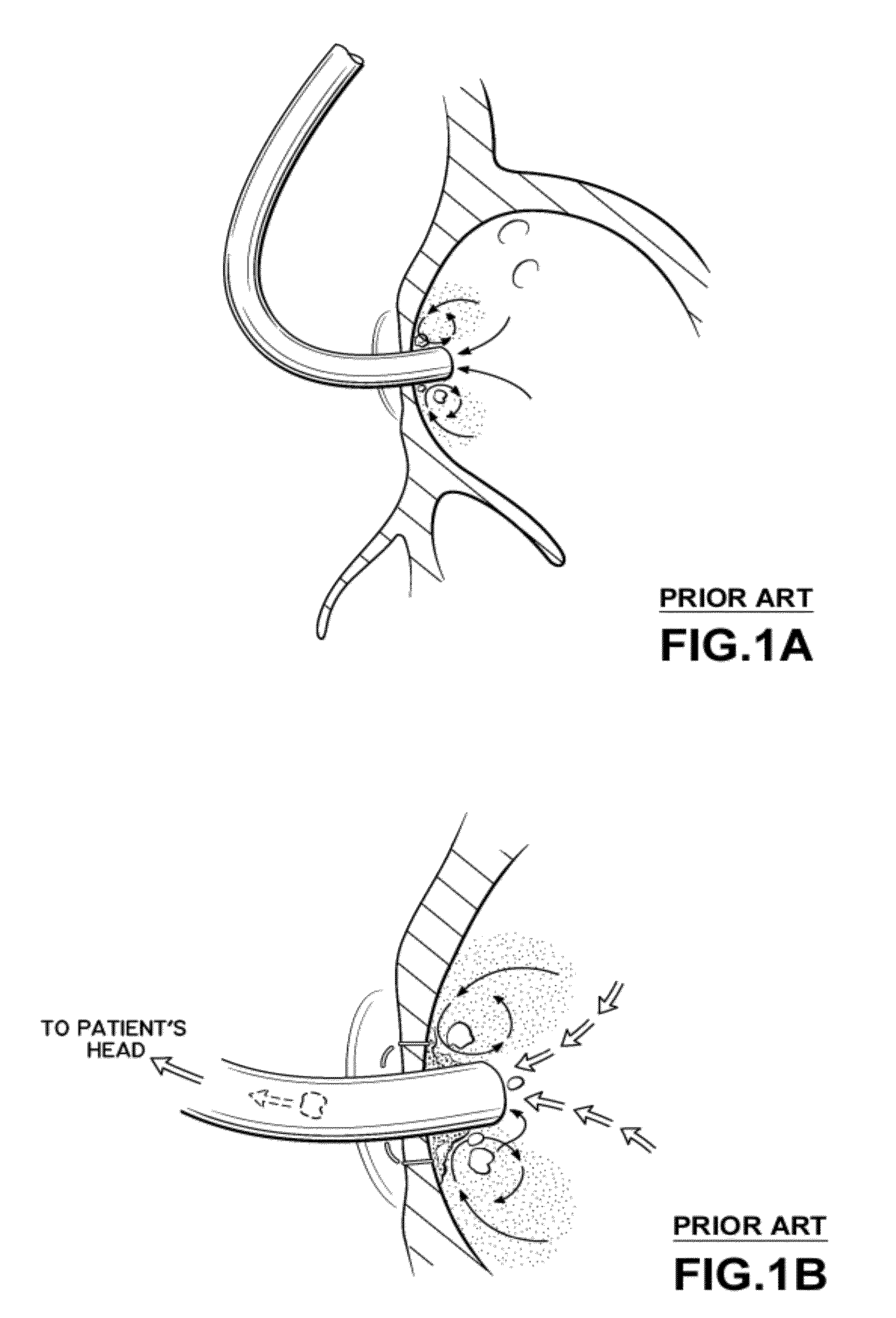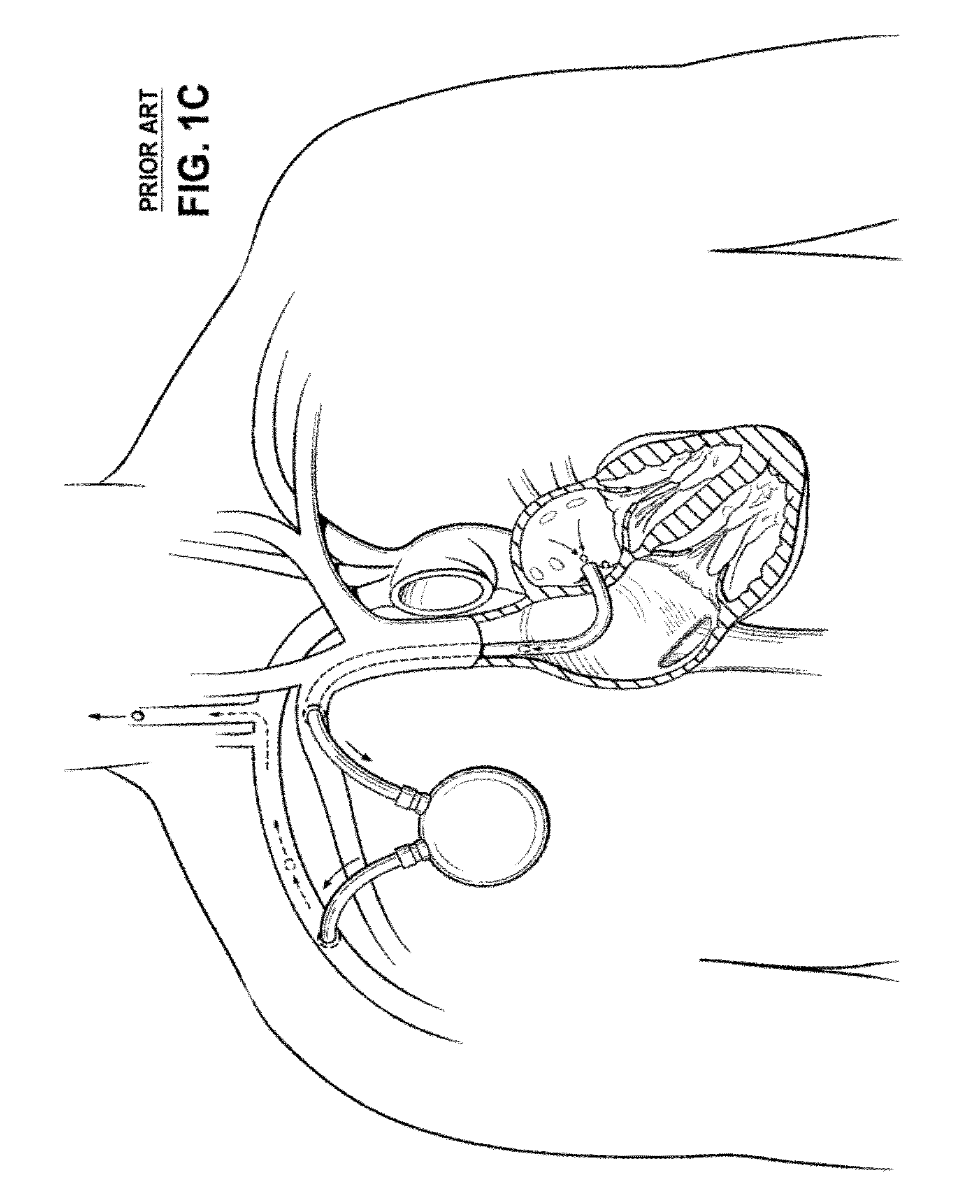Cannula Systems and Methods
a technology of cannulas and cannulas, applied in the field of cannula systems and methods, can solve the problems of insufficient blood flow, impaired cardiac function, congestive heart failure, etc., and achieve the effect of eliminating the need for suturing and preventing blood leakag
- Summary
- Abstract
- Description
- Claims
- Application Information
AI Technical Summary
Benefits of technology
Problems solved by technology
Method used
Image
Examples
Embodiment Construction
[0057]FIG. 1A illustrates an inflow cannula for a heart pump positioned in the left atrium of the heart according to a known approach, with the tip of the inflow cannula extending about one centimeter into the left atrium from the atrial septum. While blood flow into the inflow cannula is brisk, the blood around the inflow cannula is stagnant and can form eddy currents that limit the entry of fresh blood to wash the area surrounding the inflow cannula. Clots may form in this region.
[0058]FIG. 1B shows that a clot has formed and attached to the atrial wall around the inflow cannula. Other clots may form along the side of the inflow cannula, and may not attach securely to the inflow cannula and thus may become dislodged. Clots may be drawn into the inflow cannula by the strong flow induced by the blood pump.
[0059]FIG. 1C indicates a catastrophic outcome for a clot originating around the inflow cannula inside the left atrium. A clot has formed around the inflow cannula tip, entered the...
PUM
 Login to View More
Login to View More Abstract
Description
Claims
Application Information
 Login to View More
Login to View More - R&D
- Intellectual Property
- Life Sciences
- Materials
- Tech Scout
- Unparalleled Data Quality
- Higher Quality Content
- 60% Fewer Hallucinations
Browse by: Latest US Patents, China's latest patents, Technical Efficacy Thesaurus, Application Domain, Technology Topic, Popular Technical Reports.
© 2025 PatSnap. All rights reserved.Legal|Privacy policy|Modern Slavery Act Transparency Statement|Sitemap|About US| Contact US: help@patsnap.com



